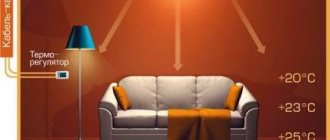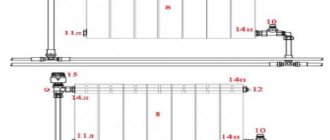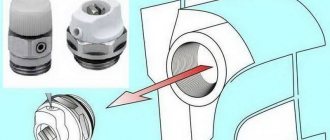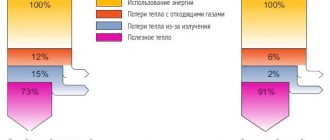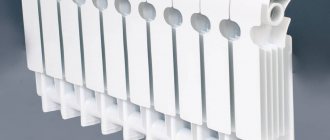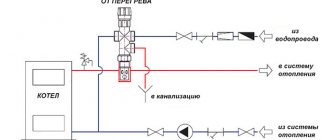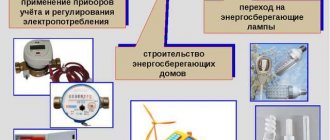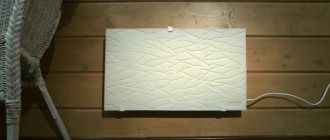Panoramic windows are a very beautiful solution for the interior of a public institution, apartment or house.
But many refuse such glazing due to the fact that they have to sacrifice heat: installing standard radiators turns out to be impossible, and it is difficult to get rid of condensation.
But there is a way out:
The range of modern heating equipment is so wide that you can always find a suitable option. Go...
Warm loggia
Warm loggia
Heated windows. Warm loggia. Warm balcony.
Modern architectural and construction solutions in the field of facade glazing can give any building a special look. Glass structures allow the architect to realize the most original and non-standard projects, and looking at the appearance of urban new buildings, it becomes obvious that the use of glass structures by developers is the most popular trend. This is explained by the fact that façade glazing technology allows you to expand the usable area of residential premises, increase visibility and add natural light to them. The glazed facade gives the house originality and makes it stand out against the backdrop of typical buildings.
Heating of windows and heating of rooms with panoramic glazing.
The appearance and design of heating devices in rooms with stained glass windows, from the point of view of design and functional efficiency, is important, since heaters that are inconsistent with the architectural design can completely destroy it. Conventional panel or aluminum radiators are not suitable in this case.
The reason is not only that they will not fit into the overall design, both internal and external, but also because the surface of the glass is the coldest in the entire room and condensation is likely to form on it. For example, in the kitchen the relative humidity level can reach up to 80%. The dew point value is 18-19°C. If the temperature on the surface of the window is at least 3 °C above the dew point, i.e. about +21 - +24 °C, then the windows will not fog up, in other words, “cry”. Accordingly, in order to prevent condensation from falling on the glass, it is most rational for heating devices to be located along the entire perimeter of the glazing, creating a continuous thermal curtain. Heating windows using warm baseboards is most effective. Warm air rising in a continuous stream along the entire perimeter of window structures will create a reliable thermal barrier and will not allow moisture to condense on the inner surface of the glass.
Warm loggia. Warm balcony.
How to make a loggia warm? Let's consider a popular trend in apartment redevelopment - combining a loggia with an adjacent room, living room or kitchen. Combining a loggia with an apartment is an excellent solution to increase usable space, especially if the dimensions of the apartment are small. Such a reconstruction usually entails special measures to improve the quality of windows, additional insulation of walls, floors and ceilings, since the thermal resistance of enclosing structures should not be lower than building standards (see SNiP thermal protection of buildings). Are you interested in preventing the heat on the balcony from escaping onto the street? Then you can’t do without reliable thermal insulation
Insulating the loggia is very important, since an insufficient level of thermal insulation of the fences will lead in the future to dampness, condensation, the formation of mold, and disruption of the microclimate in the room combined with the loggia, so it is better not to save on insulating loggias and balconies
But insulating the loggia is not all. Thermal insulation is like a person’s clothing; it prevents heat from escaping, but does not produce it. In order for a loggia or balcony to become truly warm, heating must be installed there. The loggia becomes part of the living space, which means the total amount of heat loss will increase, and the heating devices installed in the room initially were not designed for the connected volume and heating the loggia will require additional thermal power. Heating a loggia, taking into account the specifics of the room, will be especially effective using baseboard heating. Uniform heating of the inner surface of the walls will create an additional layer of thermal protection, preventing the formation of dampness in the corners and condensation on the windows.
Insulation of balconies and loggias in combination with installed warm baseboards allows you to achieve the required level of comfort in cold weather. Heating a loggia in urban conditions is most simply and quickly accomplished using the electric version of the baseboard system. A warm electric baseboard can be quickly installed even in winter, when the lack of heat on the loggia is especially noticeable, and electric heating does not require preparatory work.
Scope of use of floor radiators
First, let's figure out where heating devices that are installed on the floor are used.
It is advisable to use water floor radiators in the following cases:
- In rooms where, for one reason or another, it is not possible to install traditional radiators for wall mounting. This often happens in houses where the walls are made of loose material (aerated concrete, foam concrete) or covered with plasterboard. Even light aluminum appliances cannot be hung on them.
- In shop windows and shopping centers, low floor heating radiators are used for panoramic windows. Such glazing cannot be left without a thermal curtain, because condensation will accumulate on the windows and ice will form.
Unlike wall-mounted heating units, floor-standing radiators are installed only on the floor and are not mounted on walls. The height of these devices is less than that of their sectional counterparts. The stand for the unit is rigidly attached to the floor.
Advantages and disadvantages
The advantages of low heating radiators include the following:
- the unit can be mounted anywhere, regardless of the height of the windows;
- a low heating device saves free space in the room;
- Thanks to its stylish design and attractive appearance, the battery does not spoil the interior of the room and fits into any room design;
- can be installed in a room with panoramic windows to create a thermal curtain in front of them;
- during installation, the material and strength of the walls does not matter, because the batteries are not attached to them.
Such heating devices also have disadvantages, they are as follows:
- To connect the battery to the heating system, you need to lay pipes in the floor screed, because they will interfere with the placement of furniture. Hidden installation of pipelines is considered not the best option, because it is more difficult to maintain and repair networks.
- The heat from these heating devices is distributed unevenly, so the unit is not suitable for heating rooms of considerable height. In this case, some areas of the room may not be heated at all.
- Due to the hidden installation of pipelines, the floor screed in the room is made to a certain height, which creates difficulties when attaching radiators.
A significant disadvantage of floor heating units is that they are more expensive than sectional wall-mounted radiators, and they heat the room worse.
Types of floor batteries
All horizontal heating radiators that are mounted on the floor are divided into several types depending on the material used:
- Cast iron batteries were widely used in the last century, but they cannot boast of aesthetic appeal. Their main disadvantage is that the inside of the structure quickly silts up, so it needs to be cleaned regularly (about once every three years). When subjected to mechanical stress, cast iron can crack. The same thing happens with water hammer.
- Steel radiators are more popular today. They are quite durable and visually attractive. However, steel plate devices often leak in the weld area.
- The most reliable and beautiful bimetallic units. There is a steel core inside the aluminum body. Thanks to this, the heat transfer of the device is quite high, and optimal strength allows them to be installed in centralized networks with high pressure.
- Aluminum batteries are the lightest, but they are not designed for high pressure in the network, so they are used only in autonomous systems. It is important to carefully select the material of pipes and fittings, because aluminum forms galvanic couples with some metals.
By design, floor-standing units can be panel or sectional. Panel batteries are made only from steel, while sectional batteries are made from bimetal, cast iron or aluminum. In addition, all heating devices come in different heights.
Important! Higher batteries have the smallest heat losses with a small number of sections.
Heating options for windows
When conventional radiators do not fully cope with the functions assigned to them or a different type of heating system is used in the premises, it is recommended to install heated windows to ensure comfortable conditions. Thanks to this solution, it is possible to minimize heat leakage and maintain optimal temperature conditions in the rooms at the lowest possible cost. There are several options for heating windows on the market, so you can always choose the most suitable one.
In what cases is it recommended to use heated windows?
If the window openings have a large area, then it is definitely better to immediately install heated windows, since the flows emanating from the radiator are not able to create an effective thermal curtain. These models are also recommended when rooms are heated:
- heated floor system;
infrared heaters installed outside window openings;
warm air through ventilation ducts;
fireplaces, etc.
In all of the above cases, there are no full-fledged thermal curtains opposite the window openings, which can provoke a whole list of negative consequences:
- rapid decrease in temperature in the rooms;
excessive condensation;
the appearance of fungus and mold on various elements of window structures.
Aluminum, wooden and plastic heated windows do not have such problems. In addition, they not only help create comfortable conditions for living and working, but also allow you to significantly reduce heating bills.
Window heaters
These products are designed to slow down the process of heat exchange between indoor spaces and the street. They also allow you to additionally warm the air in the rooms, thereby reducing the load on the central heating system.
Today, window heaters are represented by two types of devices:
- infrared elements - devices whose operation does not generate air currents, since they heat objects located in their area of action;
air thermal curtains - such a window heater supplies a powerful stream of air heated to a certain temperature parallel to the opening, due to which an additional invisible barrier is created between the room and the street.
Such devices not only retain heat and heat the rooms, but also prevent the appearance of drafts that can occur if the windows are slightly depressurized.
Flexible window heating system
Infrared elements and thermal curtains are generally effective, but have some disadvantages. For example, they require space for installation, sometimes create noise and in some cases have a negative impact on the interior. European engineers have figured out how to make a quiet and unnoticeable device that prevents windows from cooling. Its work is based on thin heating elements, which are a flexible tape that runs along the perimeter of the glass unit. Such a system consumes little energy and increases the temperature of the glass unit, eliminating cold bridges in both blind and active sashes.
In addition to being economical and compact, this system is suitable for windows that are already in use. Thanks to the minimal thickness and flexibility of the heating elements, it is possible to remove the glass unit from the frame, wrap it in tape and insert it back, and then connect it to the control unit. This device prevents condensation from forming and slows down the heat transfer process. Its integration guarantees the absence of frost on the windows even at very low temperatures.
The flexible system is best suited for openings with relatively small dimensions, since it slightly heats these products only around the perimeter. If significant heat loss through the windows is expected, then it is better to use a device that is able to heat the glass over its entire area.
Heated double-glazed windows
Recently, there has been an increase in demand for windows in which heated double-glazed windows are installed, capable of creating a thermal curtain directly in the air chamber itself. Their operating principle is based on heating a special coating, evenly distributed over the entire area of the glass, with the passage of electric current. A detailed review of these models has been published on OknaTrade. This modification will cost more than the two previous devices, but it is much more advanced and compact than heaters and more functional than flexible heating tapes. In Russia, heated double-glazed windows are recommended for installation in regions with harsh climates, as well as glazing of verandas, terraces, winter gardens and swimming pools.
Built-in devices
Heating radiators built into the floor are used to heat office, retail and residential establishments. They can be used in greenhouses and conservatories to create temperature conditions that are comfortable for plants. The operation of the device is based on the principle of convection. Built-in units promote intensive air circulation, so they heat the room faster and more efficiently, which reduces heating costs.
Worth knowing! There are built-in radiators on sale with automatic temperature control, condensate removal function, and the ability to program the microclimate in the room.
The unit has a simple design. Inside the metal housing there is a heat exchanger with convective plates. The body of the device is built into the floor, and is covered with a durable decorative grille on top.
For places with high humidity, it is better to buy a device made of stainless steel, and in rooms with a normal microclimate, batteries made of galvanized steel are used. To protect the body and pipes from corrosion, they are powder coated.
In the interior of the room, only the radiator grille is visible from such a device. In its manufacture, wood, aluminum, marble or one of the types of steel (stainless or galvanized) are used.
Based on their design, gratings are divided into roll and linear. The last gratings can only be lifted as a whole, and the second type is rolled up. Rolled decorative overlays consist only of transverse crossbars, while linear structures also have longitudinal stiffening ribs. Since the grille will be walked on and furniture placed on it, no plastic parts are used in its design.
Types and scope of use
Built-in batteries are usually used in the following places:
- public and residential premises with panoramic glazing;
- greenhouses;
- galleries, museums and exhibition halls;
- offices and commercial premises;
- private and apartment buildings.
Important! The efficiency of in-floor radiators with a fan increases to 90%. This is achieved thanks to improved air circulation. The fan can be turned off if necessary.
Devices with a fan have special porous rubber gaskets to reduce the noise level in the room. The unit has electronic temperature sensors, regulators for setting the temperature and fan speed.
Related article: How to install plastic windows in a log house
There are two types of built-in batteries:
- Water heating radiators in the floor consist of a metal tube on which convection plates are strung. Typically, tubes made of copper, steel or aluminum are used. The unit is connected to the water heating system of a house or apartment. In centralized networks, a design with copper pipes cannot be used.
- Inside the electric built-in heater there is a closed heating element. To increase the heat transfer area, plates of steel, aluminum or copper are welded onto it. Stainless steel heating elements will last the longest. These radiators are fused for safe operation.
On a note! There are in-floor radiators with fans on sale that can both heat the air in the room and cool it.
Some varieties have built-in filters that allow them to purify air from the street and, after heating, supply it indoors. To make it easier to control the operation of the device, you can purchase a control panel for it. Typically, built-in radiators of a rectilinear configuration are found on sale, but a semicircular device can be made to order.
Pros and cons of built-in radiators
The advantages of underfloor heating batteries include the following:
- The unit can be installed anywhere.
- The device can be used in a room of any size because it does not take up space, being installed in a niche under the floor. You can walk on the grate and place furniture on it.
- The battery does not require special care and is easy to repair and maintain.
- Due to the fact that the unit is not visible in the interior, it can be used in rooms decorated in any style.
- The safety of the device allows it to be installed in a children's room.
- When installed near a doorway or under panoramic windows, the radiator forms a thermal curtain that prevents heat loss.
But when choosing this type of heating device, you should not forget about their disadvantages.
The disadvantages include the following:
- Installing and connecting this device is quite labor-intensive. It is better to entrust all work to professional craftsmen.
- To install the device in the floor, the screed has to be made quite high, which leads to significant consumption of materials.
- Heating efficiency is noticeably reduced in a room with a height of more than three meters.
- The price of built-in heating devices is higher than that of their wall-mounted counterparts.
During operation of the built-in radiator, active dust circulation occurs in the room. This worsens the well-being of young children and negatively affects the health of allergy sufferers.
Tips for choosing
When purchasing, pay attention to the dimensions of the unit and its power. Also decide in advance whether you need a device with a built-in fan.
When choosing, consider the following parameters:
- pressure in the heating system;
- the purity of the coolant and its composition are important for the choice of pipe material in water units;
- the diameter of the pipeline can be ignored, because there are adapters on sale;
- type of wiring (one-pipe or two-pipe);
- humidity in the room (the material of the housing and pipes depends on this, as well as the need for a condensate removal function).
It is advisable to use floor-standing and built-in heating devices in rooms where the parameters of a conventional wall-mounted radiator do not meet the requirements or their installation is generally impossible.
Features of arranging transparent walls
The arrangement of transparent walls that decorate the exclusive interior of the room is accompanied by taking into account a number of important nuances.
- A lot of thermal energy is lost through large window structures, changing the microclimate of the room.
- The difference in parameters of external and internal temperatures forms the air space where cooled flows move.
- In winter, frosty patterns appear, rising temperatures condense vapors, which, after flowing down, become an excellent habitat for harmful fungi.
Preserving the aesthetic appeal of the panoramic glazing design is achieved by assembling a special heating system.
Bimetallic devices for panoramic windows
This type of radiator belongs to heat supply equipment, the high cost of which best corresponds to the quality.
Bimetallic radiators differ:
- High working pressure.
- Compatible with other metals. In them, aluminum is used only for the manufacture of the shell, which increases the aesthetics of appearance and heat transfer. As for the internal casing, equipped with outlets for connection to the system, it is made of stainless steel or black steel.
The height of bimetallic radiators for panoramic windows ranges from 24.5 to 45 centimeters.
The best heating for panoramic glazing
The Warm Plinth system is recommended for installation under floor-to-ceiling windows.
Panoramic glazing, floor-to-ceiling windows, and a picturesque view from the window are signs of elite modern housing and are mostly represented in business-class housing and penthouses.
Panoramic windows have both pros and cons. Glass “walls” provide maximum daylight. Large windows let in a lot of sunlight and heat, but in summer an excess of sunlight leads to the fact that the room is very hot, and in winter, on the contrary, it is cold, since a large glazing area means significant heat loss.
The thermal conductivity of glass is significantly higher than the thermal conductivity of walls. Therefore, it is necessary to use more energy-efficient window systems and increase the heating intensity of the room.
It is most optimal to install heating equipment around the perimeter of the window unit to help the windows warm up from the inside and raise the surface temperature of the inner glass above the dew point. However, installing a convector or radiator against the background of panoramic glazing will significantly spoil the aesthetics and will look ridiculous with a radiator in the center... In-floor convectors require construction preparatory work and are quite expensive. Thermal curtains with top and side placement are not friendly to physics...
Heating in baseboards
Relatively recently, a new and lowest method of creating heating has appeared. In this case, the heat supply structure consists of copper tubes finned with plates, due to which heat transfer increases. Water circulates through them.
The tubes are laid around the perimeter of the room and covered with special metal baseboards. This heating design has the smallest dimensions. It is 30 millimeters wide and has a height of 100–200 millimeters (depending on the power of the system).
Heating in baseboards has the following advantages:
- Great opportunities for implementing design solutions in the interior.
- Uniform distribution of warm flows along the walls.
When a unique design is created in a room, it is low radiators for stained glass windows that allow the heating system to be correctly and beautifully integrated into the interior.
Low radiators
A worthy replacement for standard radiators will be their low variety - they are in no way inferior in quality, but at the same time they do not visually burden the interior at all and leave a fairly wide viewing angle.
They can be installed directly in front of double-glazed windows: they protect against condensation and drafts. It is very important to choose the model that will be ideal for your home. For example, cast iron batteries take a long time to heat up, but at the same time they hold high temperatures very well and on average last up to 50 years
Steel and aluminum heat up faster, but at the same time they do not please with their strength. Bimetallic models can be considered the best option - they combine both good heating and high strength.
